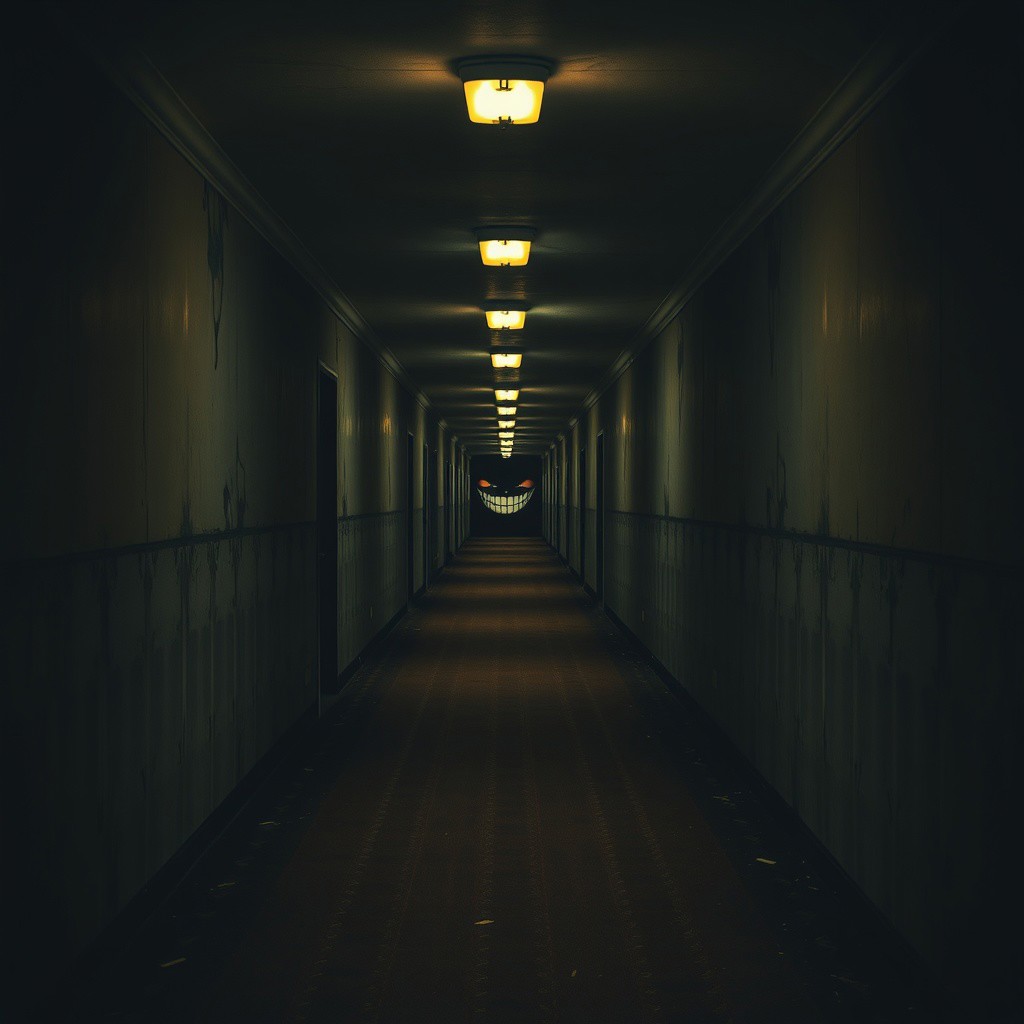A liminal space of an endless, dimly lit corridor, stretching unnaturally far. The old, yellowish lights flicker inconsistently, casting elongated shadows along the worn-out carpet and stained, featureless walls. A feeling of wrongness lingers in the air—something about this place feels familiar, yet entirely unnatural. The further you look down the corridor, the darker it gets, the walls subtly bending, as if the space itself is warping. The sound of your own breath and footsteps feel too loud, amplified in the thick, unsettling silence. Then, you see it. Nestled in the deepest shadows at the far end of the hall, a grin emerges. Not just a grin—a massive, inhuman smile, too wide, too sharp, gleaming unnaturally against the darkness. It is not attached to a face. It simply floats there, watching. And with every flicker of the dying lights… it moves closer.
